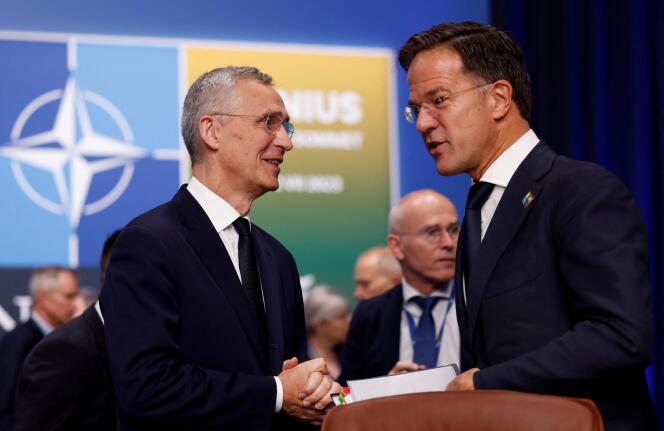


The kick-off was on January 18. No fewer than 90,000 soldiers from the 31 allied countries of the North Atlantic Treaty Organization (NATO) – plus Sweden, which cleared its last hurdle to join the alliance following ratification by the Hungarian Parliament on Monday, February 26 – will be mobilized across Europe in the first half of the year to test the ability of the NATO armies to rapidly move forces across the entire territory in order to defend the eastern flank. The exercise, called Steadfast Defender, is quite simply the biggest NATO exercise since 1988 and the end of the Cold War.
This show of military strength comes two years after the start of Russia's invasion of Ukraine. Will it be enough to reassure the allies, as bad news continues to mount a few months ahead of the next NATO summit, which will be held in Washington, DC, from July 9 to 11? This meeting is intended to celebrate the 75 years since the institution was created from the rubble of the Second World War.
At NATO headquarters in Brussels, the calmness and determination of Secretary General Jens Stoltenberg hardly conceal the apprehension, doubts and even nervousness of others in the building: The military situation in Ukraine is extremely difficult, and there are many unknowns about the future. It's not Stoltenberg's future that is worrying. On the contrary, the former Norwegian prime minister wants to finally retire. He will hand over his seat in the spring to Dutch Prime Minister Mark Rutte, who is backed by a majority of the allies, including the United States and France.
The evolution of the conflict in Ukraine is the primary cause for concern. Lacking sufficient ammunition and weapons, the Ukrainian army is being shelled incessantly by the Russian army. After two years of fierce fighting, it has changed command and suffered defeats on Ukraine's eastern front. While European allies are struggling to provide Kyiv with military support, the political debate in Washington, DC, where Congress has been blocking a $60 billion military aid package for several months, is further weakening Ukraine.
"Putin must not be allowed to win this war," Stoltenberg regularly says. Indeed, the Baltic states and Poland fear being next on the Kremlin's list after Ukraine. Although NATO launched itself into Libya and Afghanistan in the early 2000s, since Russia's 2014 seizure of Crimea, it has had to return to its fundamentals: first and foremost, the safety of its territory. At a time when peace is no longer guaranteed, according to Stoltenberg, more and more allies are warning of a possible Moscow offensive on one of their own within the next five years.
You have 49.98% of this article left to read. The rest is for subscribers only.
